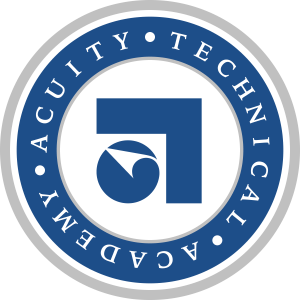Video Production 2A
Section outline
-
-
Watch the presentation of learning video to learn about color temperature and white balance.
-
Read the following page to gain a deeper understanding of the content and prepare for the discussion and assignments.
-
Please respond to the following discussion board and comment on a peer's response to show your knowledge of color temperature and white balance.
-
This assignment is designed for you to demonstrate what you learned in this lesson by applying that knowledge in a real world context.
Please click add submission below to get started.
-
Opened: Thursday, 9 January 2025, 12:00 AM
This learning lab allows you to change the white balance and other color correcting settings of provided footage and reflect on the way that the shots change.
Please click add submission below to get started.
-
Opened: Thursday, 9 January 2025, 8:47 AM
Please complete lesson 1 introduction video, presentation of learning, discussion board, assignment, and learning lab before completing this quiz.
-
-
Please read the short essay to expand upon your knowledge of color theory and prepare for the discussion and assignments.
-
-
Opened: Thursday, 9 January 2025, 12:00 AM
This learning lab is designed for you to demonstrate what you learned in this lesson by applying that knowledge to a movie or TV show you watched recently.
Please click add submission below to get started.
-
Opened: Thursday, 9 January 2025, 12:00 AM
This learning lab is an opportunity for you to use your color theory knowledge to film your own video.
Please click add submission below to get started.
-
Please complete lesson 2 introduction video, presentation of learning, discussion board, assignment, and learning lab before completing this quiz.
-
-
Read this passage to gain a deeper understanding of character development before beginning your discussion board and assignments.
-
-
Opened: Thursday, 9 January 2025, 12:00 AM
This assignment is designed for you to demonstrate what you learned about screenwriting. Please open the assignment to get started.
-
Opened: Thursday, 9 January 2025, 12:00 AM
This learning lab is designed for you to demonstrate what you learned in this lesson about "show vs tell".
Click add submission to get started.
-
Please complete lesson 3 introduction video, presentation of learning, discussion board, assignment, and learning lab before completing this quiz.
-
-
Please respond to the following forum about screenwriting and respond to at least one of your peers.
-
Opened: Thursday, 9 January 2025, 12:00 AMDue: Monday, 30 June 2025, 12:00 AM
-
Opened: Thursday, 9 January 2025, 12:00 AMDue: Monday, 30 June 2025, 12:00 AM
-
Please complete lesson 4 introduction video, presentation of learning, discussion board, assignment, and learning lab before completing this quiz.
-
-
Please respond to the following forum and at least one of your peers regarding green screen productions.
-
Opened: Thursday, 9 January 2025, 12:00 AM
This assignment is designed for you to demonstrate what you learned in this lesson regarding green screen productions.
Please click add submission below to get started.
-
Opened: Thursday, 9 January 2025, 12:00 AMDue: Monday, 30 June 2025, 12:00 AM
This learning lab is designed for you to demonstrate what you learned in this lesson regarding green screen productions.
Please click add submission below to get started.
-
Please complete lesson 4 introduction video, presentation of learning, discussion board, assignment, and learning lab before completing this quiz.
